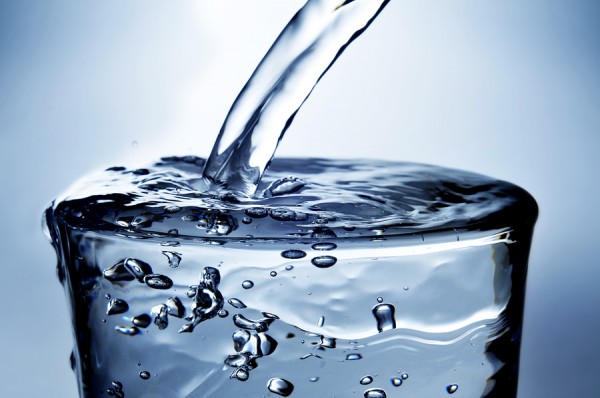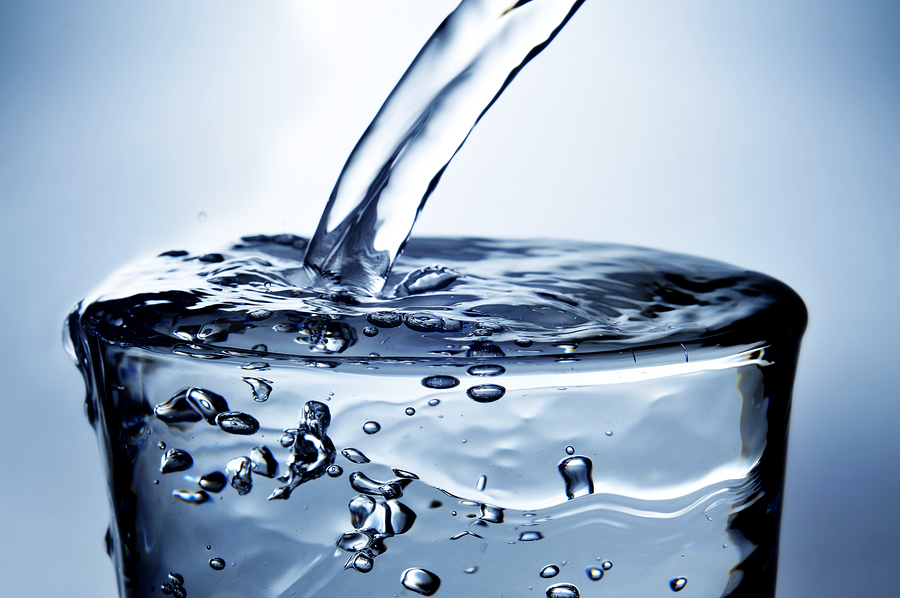 Water is the most important compound to life. Wherever there is water, there is also life. Many of the earth’s first civilizations were centered near bodies of water. Just as water plays a critical role in society, it also plays a critical role in our bodies. The human body is comprised of about 70% water. It is recommended that people drink at least 64 ounces of water daily, and that water needs to be clean and pure. For that reason, many people have turned to bottled and purified water. Bottled water is big business in America. It is estimated that more than 5 billion gallons of bottled water is consumed in the United States every year. That’s a lot of water! Consumers are drinking more bottled water because they simply do not trust the quality of tap water. There are hundreds and hundreds of different types and brands of water. There are differences between artesian water and spring water; reverse osmosis and distilled water. This piece will give you the information you need to make an educated decision on which water to drink.
Water is the most important compound to life. Wherever there is water, there is also life. Many of the earth’s first civilizations were centered near bodies of water. Just as water plays a critical role in society, it also plays a critical role in our bodies. The human body is comprised of about 70% water. It is recommended that people drink at least 64 ounces of water daily, and that water needs to be clean and pure. For that reason, many people have turned to bottled and purified water. Bottled water is big business in America. It is estimated that more than 5 billion gallons of bottled water is consumed in the United States every year. That’s a lot of water! Consumers are drinking more bottled water because they simply do not trust the quality of tap water. There are hundreds and hundreds of different types and brands of water. There are differences between artesian water and spring water; reverse osmosis and distilled water. This piece will give you the information you need to make an educated decision on which water to drink.
The Problems with Tap Water
Many of the methods used to treat drinking water have been used since before World War I, which began in 1914. Aluminum sulfate and multiple doses of chlorine are used to help treat water. Adding chlorine, which is meant to kill bacteria, viruses and harmful microbes also creates chlorination by-products. These by-products are probably human carcinogens and may cause problems in fetal development. The antiquated methods of water treatment do little or nothing to remove arsenic, cyanide, perchlorate (rocket fuel), dry cleaning solvents, industrial wastes, pesticides, petroleum chemicals, and parasites like cryptosporidium.
Common Contaminants in Tap Water
Cryptosporidium
This is a waterborne parasite that causes diarrhea for 2 weeks accompanied with nausea, abdominal cramps and fever. No treatments exist that can kill crypto. This parasite has significant health concerns for young children, the elderly, chemo patients and anyone with a compromised immune system. An outbreak of cryptosporidium that affected Milwaukee, WI in 1993 sent several thousand residents to the hospital and killed approximately 100 people. Over 400,000 people in Milwaukee became ill.
Arsenic
Arsenic comes from mining, industry, or natural leaching from rock. The current national standard for arsenic is 50 ppb (parts per billion). In 2006, this standard will change to 10 ppb. Arsenic is toxic and causes cancer. According to the National Academy of Sciences (NAS), arsenic in drinking water is known to cause cancer of the bladder, skin and lungs. A recent report from the NAS stated that a person who drinks 2 liters of water a day that contains 10 ppb of arsenic has a lifetime fatal cancer risk greater than 1 in 333. The EPA generally does not allow greater than 1 in 10,000 lifetime fatal cancer risk for drinking water contaminants.
Cyanide
Cyanide is a well known poison. It is used in steel and metal manufacturing. According to the EPA, chlorination treatment of some wastewater can create cyanide. The current national standard for cyanide is 200 ppb. Long-term exposure can cause thyroid effects and nerve damage.
Lead
Lead is a heavy metal considered to be the number one environmental health threat to children. No amount of lead is safe. Lead usually enters the drinking water supply form the corrosion of water utility pipes in the distribution system. This includes the pipes used to deliver the water to houses. It can also enter the supply from plumbing and faucets. The current national standard is 15 ppb. Lead poisoning can cause permanent brain damage in serious cases. Less serious cases can cause growth, development and behavioral problems in children.
Atrazine
Atrazine is one of the most widely used pesticides in the United States. It is most often applied to corn. Atrazine can enter the water supply by farm run-off. It also evaporates and is redeposited with rain. Atrazine is among the most commonly found pesticides in drinking water virtually anywhere corn is grown. The current national standard is 3 ppb.
This pesticide is an animal carcinogen. Short term exposure may cause prostate cancer, heart and lung congestion and damage to the adrenal glands. It is a known endocrine disruptor. Because all endocrine disrupters interfere with hormonal development, atrazine may cause breast cancer.
These examples of contaminants represent only a very small percentage of toxins present in drinking water. Prescription drugs, like Prozac and hormones are often found in the drinking water supply.
Bottled Water
Artesian Water
This is water from a well that taps an aquifer. An aquifer is layers of porous rock, sand and earth that contain water. When it is tapped, pressure pushes the water above the aquifer, sometimes to the surface. Water from artesian aquifers is often more pure because the confining layers of rock and clay impede the movement of contamination.
Mineral Water
This type of water is from an underground source that contains at least 250 ppm total dissolved solids. Minerals and trace elements must come from the source of the underground water. Minerals cannot be added later.
Spring Water
Spring water is derived from an underground formation from which water flows naturally to the surface. Spring water must be collected only at the spring or though a hole tapping the underground formation feeding the spring. The water obtained through this hole must have the same quality as the water that naturally flows to the surface.
Bottled water quality is regulated by the FDA. The FDA has adopted EPA standards for tap water as the standards for bottled water. Whatever is allowed in tap water is allowed in bottled water.
Purified Water
There are several types of water treatment. Some common examples include: distillation, reverse osmosis, and ozonation. Any bottled water that has been treated by distillation, reverse osmosis and ozonation can be labeled as “purified.”
Distillation
Distillation is a process in which water is heated and vaporized in order to be purified. Distillation will remove contaminants with a boiling point higher than that of water, which is 100° C (212° F). The distillation process is efficient at removing inorganic materials, such as metals and nitrates. The boiling process will also kill most bacteria and viruses. However, distillation is not the best method in removing volatile organic compounds. Many of these compounds, such as benzene and toluene, have lower boiling points than water. They will vaporize with the water and remain. Another method should be utilized prior to distillation in order to remove the volatile organic compounds.
Reverse Osmosis
Reverse osmosis involves a semi-permeable membrane that allows water to pass through, but rejects contaminants. This process is capable of rejecting bacteria, salts, sugars, proteins, and other large particles. Reverse osmosis is considered one of the best ways to produce water that meets demanding specifications.
Ozonation
Ozone is a form of oxygen. Normally, oxygen molecules are found in pairs. In the case of ozone, the molecules are formed in trios. Ozone is what keeps our air clean. Ozone has the ability to destroy nearly all organic compounds. Parasites are easily destroyed by ozonation.
As you can see, there isn’t a single type of purification that provides completely pure water. A combination of systems is the best way to purify water. This brings us to Sunrise Water- a seven stage purification process that combines different purification systems.
Sunrise Water
Step 1. Water Softening
The water softener will remove any hard minerals that are typically found in tap water, like calcium, iron and magnesium. These hard minerals are replaced with “soft” minerals. Water softening pre-treatment protects the reverse osmosis system from damage and ensures a high quality drinking water.
Step 2. Activated Pre-Carbon Filter
This filter purifies the water by removing chlorine. It also reduces and removes many organic compounds, chemical solvents and pesticides.
Step 3. Five Micron Sediment Filter
This filter traps particulate matter that has dissolved in the water. It also removes any sediment as small as five microns. Humans are capable of seeing things approximately 40 microns and above. Our water treatment system will automatically indicate when this cartridge filter needs to be replaced to protect the system and the quality of the water.
Step 4. Reverse Osmosis
As stated before, reverse osmosis involves a semi-permeable membrane that allows molecules of water to pass through, but rejects contaminants. Organic compounds, minerals, chlorine, and bacteria cannot pass through the membrane and will be rejected into the waste stream.
Step 5. Ozonation
Ozone is produced by an ozone generator and injected into the water in the ozone contact tower. The ozone will destroy nearly all organic compounds, including viruses, parasites and bacteria. All the water in the storage tank is recirculated through the ozone contact tower to preserve the purity and freshness.
Step 6. Activated Carbon Post Filter
The purified drinking water that flows from the sealed storage tank passes through the activated carbon post filter. This filter “polishes” the purified water, which will meet our expectations for quality and taste.
Step 7. Ultraviolet Sterilization
UV light has the ability to destroy many micro-organisms. The UV light used in our water system will destroy any residual ozone that may remain in the water. UV sterilization is an additional safeguard we use to make certain that your water is free from any bacterial contamination. This is the water that comes to you.
References:
- “What’s on Tap? Grading Drinking Water in U.S. Cities.” NRDC Report. June 2003.
- “What’s in That Bottle?” ConsumerReports. Org. January 2003.
- Bullers, Anne Christiansen. “Bottled Water: Better Than Tap?” FDA Consumer Magazine. July-August 2002. www.fda.gov



